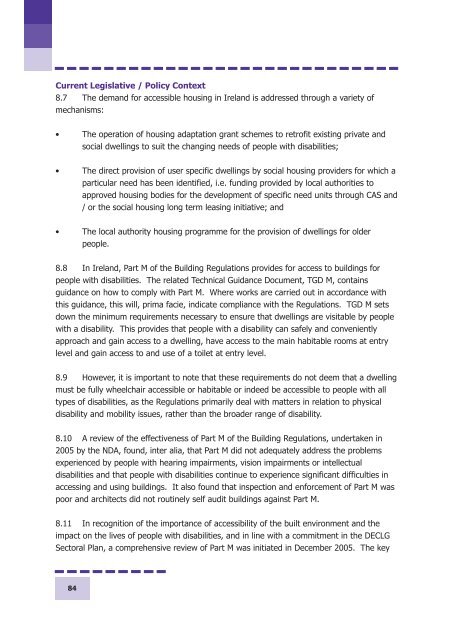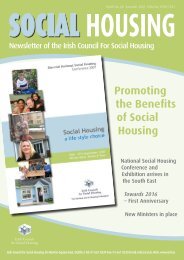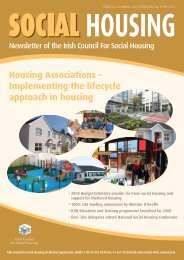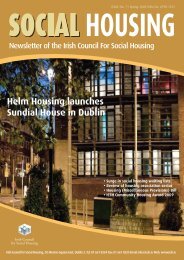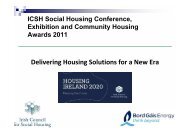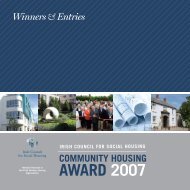National Housing Strategy for People with a Disability 2011 - 2016
National Housing Strategy for People with a Disability 2011 - 2016
National Housing Strategy for People with a Disability 2011 - 2016
You also want an ePaper? Increase the reach of your titles
YUMPU automatically turns print PDFs into web optimized ePapers that Google loves.
Current Legislative / Policy Context8.7 The demand <strong>for</strong> accessible housing in Ireland is addressed through a variety ofmechanisms:• The operation of housing adaptation grant schemes to retrofit existing private andsocial dwellings to suit the changing needs of people <strong>with</strong> disabilities;• The direct provision of user specific dwellings by social housing providers <strong>for</strong> which aparticular need has been identified, i.e. funding provided by local authorities toapproved housing bodies <strong>for</strong> the development of specific need units through CAS and/ or the social housing long term leasing initiative; and• The local authority housing programme <strong>for</strong> the provision of dwellings <strong>for</strong> olderpeople.8.8 In Ireland, Part M of the Building Regulations provides <strong>for</strong> access to buildings <strong>for</strong>people <strong>with</strong> disabilities. The related Technical Guidance Document, TGD M, containsguidance on how to comply <strong>with</strong> Part M. Where works are carried out in accordance <strong>with</strong>this guidance, this will, prima facie, indicate compliance <strong>with</strong> the Regulations. TGD M setsdown the minimum requirements necessary to ensure that dwellings are visitable by people<strong>with</strong> a disability. This provides that people <strong>with</strong> a disability can safely and convenientlyapproach and gain access to a dwelling, have access to the main habitable rooms at entrylevel and gain access to and use of a toilet at entry level.8.9 However, it is important to note that these requirements do not deem that a dwellingmust be fully wheelchair accessible or habitable or indeed be accessible to people <strong>with</strong> alltypes of disabilities, as the Regulations primarily deal <strong>with</strong> matters in relation to physicaldisability and mobility issues, rather than the broader range of disability.8.10 A review of the effectiveness of Part M of the Building Regulations, undertaken in2005 by the NDA, found, inter alia, that Part M did not adequately address the problemsexperienced by people <strong>with</strong> hearing impairments, vision impairments or intellectualdisabilities and that people <strong>with</strong> disabilities continue to experience significant difficulties inaccessing and using buildings. It also found that inspection and en<strong>for</strong>cement of Part M waspoor and architects did not routinely self audit buildings against Part M.8.11 In recognition of the importance of accessibility of the built environment and theimpact on the lives of people <strong>with</strong> disabilities, and in line <strong>with</strong> a commitment in the DECLGSectoral Plan, a comprehensive review of Part M was initiated in December 2005. The key84 84


